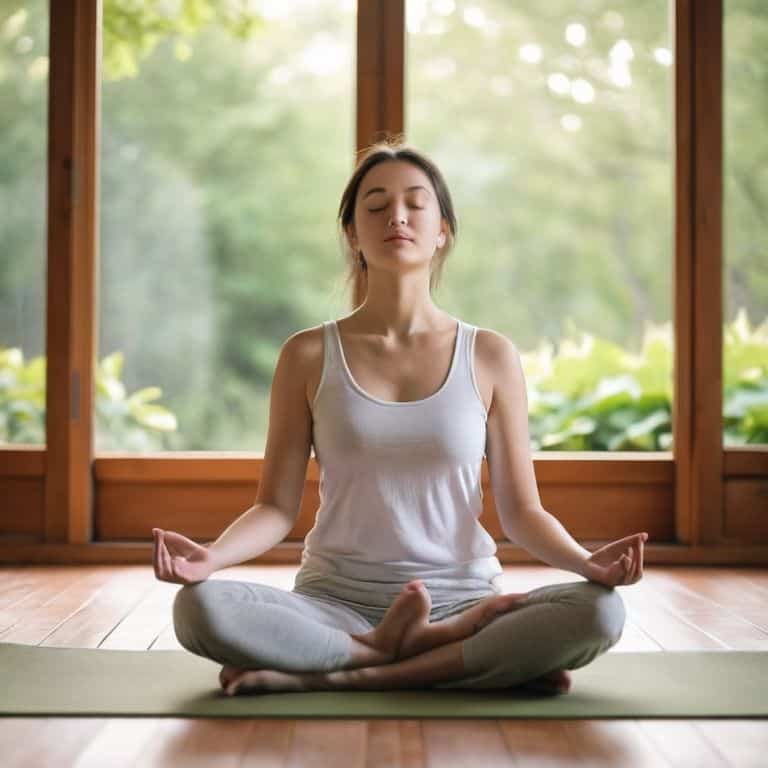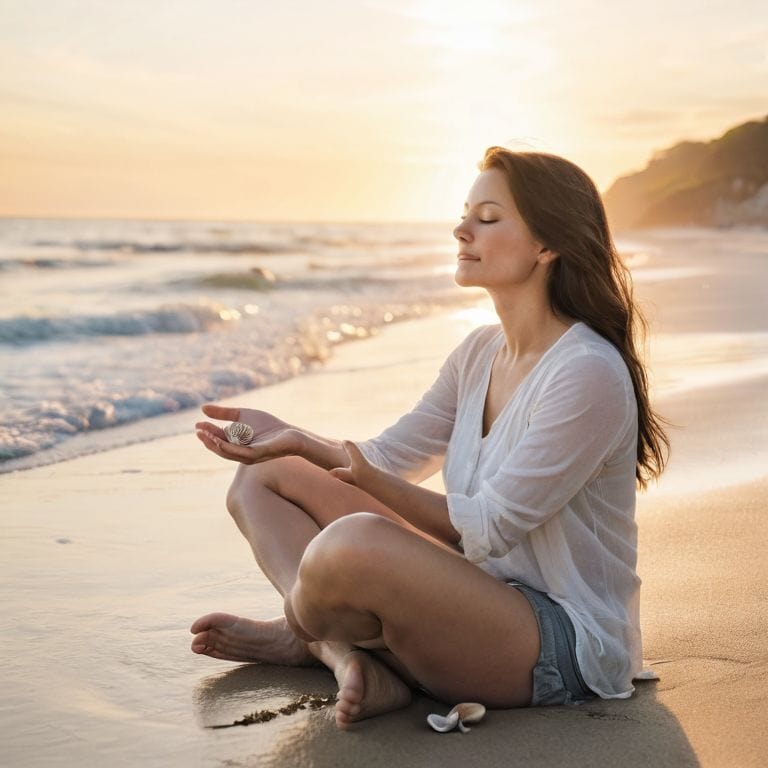Let’s take a deep breath together and explore the world of a guide to breathing exercises. I still remember my first encounter with mindful breathing – I was a stressed-out corporate lawyer, feeling lost and disconnected from my own body. A simple yet profound instruction to focus on my breath changed everything, and I began to uncover the magic that happens when we slow down and tune into our inner rhythm.
As we embark on this journey together, I promise to share practical, no-nonsense advice on how to cultivate a deeper sense of calm and clarity through a guide to breathing exercises. In this article, you can expect to find straightforward, step-by-step instructions on how to incorporate mindful breathing into your daily life, helping you to find stillness in the midst of chaos. My goal is to demystify the concept of breathing exercises and provide you with a simple, accessible tool to navigate life’s challenges with greater ease and peace of mind.
Table of Contents
Guide Overview: What You'll Need

Total Time: 10 to 30 minutes per session
Estimated Cost: free – $0
Difficulty Level: Easy
Tools Required
- Comfortable seating (optional: cushion or mat)
Supplies & Materials
- None required just a quiet space to focus
Step-by-Step Instructions
- 1. First, let’s start by finding a quiet and comfortable spot to sit, either on a cushion on the floor or on a chair, with your back straight and your body relaxed, allowing yourself to settle into the present moment with a sense of gentle curiosity.
- 2. Next, close your eyes and take a deep breath in through your nose, feeling the air fill your lungs, and then exhale slowly through your mouth, allowing any tension or stress to release and melt away, like autumn leaves floating gently to the ground.
- 3. Now, bring your attention to your breath, focusing on the sensation of the air moving in and out of your body, noticing the rise and fall of your chest or the sensation of the air on your nostrils, and when your mind wanders, gently acknowledge the thought and let it go, returning to the anchor of your breath.
- 4. As you continue to breathe, begin to notice the rhythm of your breath, the pace and the depth, allowing yourself to settle into a natural flow, like a river meandering through a peaceful landscape, and if your mind starts to wander, gently bring it back to the sensation of the breath in your body.
- 5. Now, let’s try a simple exercise called “4-7-8” breathing, where you inhale through your nose for a count of four, hold your breath for a count of seven, and exhale through your mouth for a count of eight, repeating this cycle several times, feeling your body relax and your mind calm with each repetition.
- 6. As you practice this exercise, remember to be patient and kind to yourself, allowing your body and mind to adjust to the new rhythm, and if you find your mind wandering or your body feeling restless, gently acknowledge the sensation and return to the breath, like a gentle breeze on a summer day.
- 7. Finally, when you’re ready to conclude your practice, take a few deep breaths and slowly open your eyes, noticing how you feel, and take a moment to notice the stillness within yourself, carrying this sense of calm and peace with you throughout your day, like a quiet companion on a journey.
A Guide to Breathing Exercises

As we explore the world of breathing techniques, it’s essential to remember that mindful breathing is a journey, not a destination. By incorporating breathing techniques for anxiety into our daily routine, we can begin to calm the mind and soothe the body. Whether we’re practicing yoga breathing exercises or simply taking a few moments to focus on our breath, the benefits are numerous.
To deepen our practice, let’s consider the benefits of deep breathing exercises. By slowing down our breath, we can lower our heart rate, reduce stress, and even improve our sleep quality. For those struggling with sleep apnea, breathing exercises for sleep apnea can be a game-changer. By learning how to breathe more efficiently, we can improve our overall health and well-being.
As we continue on this path, it’s crucial to remember that how to practice mindful breathing is unique to each individual. Whether we’re athletes looking to improve our performance or simply seeking a deeper sense of calm, the key is to approach our practice with patience and kindness. By embracing yoga breathing exercises for beginners, we can take the first step towards a more mindful, compassionate way of living.
Finding Calm With Yoga Breathing
Let’s breathe in the serenity of yoga together. As we inhale, imagine fresh calmness filling your lungs, and as we exhale, envision any tension gently leaving your body. Yoga breathing, or pranayama, is an ancient practice that weaves the beauty of breath with mindful movement. By synchronizing our breath with gentle stretches, we can quiet the mind and awaken a sense of inner peace.
In the stillness of a yoga practice, we find a profound connection between our breath, body, and spirit. As we breathe, we become more aware of the present moment, letting go of worries about the past or future. With each conscious breath, we anchor ourselves in the here and now, cultivating a sense of calm that stays with us long after our practice ends.
Mindful Techniques for Anxiety Relief
As we breathe, let’s gently bring our attention to the present moment. Notice the sensation of the breath moving in and out of the body. When anxiety arises, our minds often wander to the past or future. Mindful breathing helps us anchor in the now. With each inhale, imagine fresh calmness entering your body; with each exhale, imagine any tension or worry leaving.
Let’s try a simple technique: 4-7-8 breathing. Inhale for a count of 4, hold for 7, and exhale for 8. This rhythm can help slow down your heart rate and calm your nervous system. As you practice, remember that it’s okay if your mind wanders – gently acknowledge the thought and return to your breath. With patience and kindness, you can cultivate a sense of inner peace, even in the midst of chaos.
Embracing the Rhythm of Breath: 5 Essential Tips
- Let’s begin by noticing the sensation of the breath moving in and out of the body, allowing any tension to release with each exhalation
- Practice breathing exercises in nature, such as in a forest or by a body of water, to deepen your connection with the environment and calm your mind
- As you inhale, imagine fresh energy entering your body, and as you exhale, envision any stress or anxiety leaving your being, creating space for serenity
- Experiment with different breathing techniques, such as the 4-7-8 method or box breathing, to find what works best for you and your unique rhythm
- Remember, the goal of breathing exercises isn’t to achieve a specific state, but to cultivate awareness and kindness towards yourself, one gentle breath at a time
Embracing the Breath: 3 Key Takeaways
By incorporating mindful breathing exercises into our daily routine, we can cultivate a sense of inner stillness and reduce stress and anxiety
Regular practice of yoga breathing and mindful techniques can help us tune into our inner rhythm and find calm in the midst of chaos
Remember, the breath is always available to us, and by gently returning to it, we can anchor ourselves in the present moment and discover a deeper sense of peace and clarity
Embracing the Rhythm of Life
As we breathe, we anchor ourselves in the present, and in this stillness, we discover that the quietest place in the world is not a destination, but a dimension within us, waiting to be unveiled with each gentle inhale and exhale.
Elara Keane
Embracing the Power of Breath

As we come to the end of this journey through the world of breathing exercises, let’s take a moment to reflect on the key takeaways. We’ve explored various techniques, from yoga breathing to mindful approaches for anxiety relief, and discovered how these practices can lead to a more serene and grounded life. By incorporating these exercises into our daily routine, we can experience a profound shift in our overall well-being, allowing us to navigate life’s challenges with greater ease and inner peace.
As you continue on your path, remember that the breath is always available to you, a constant companion in the pursuit of mindful living. May you find joy in the simplicity of each breath, and may it guide you toward a deeper understanding of yourself and the world around you. In the stillness, may you discover your own unique rhythm, and may it harmonize with the rhythm of the universe, leading you to a life of greater clarity and purpose.
Frequently Asked Questions
How can I incorporate breathing exercises into my daily routine for maximum benefit?
Let’s breathe new life into your daily routine. Start by setting aside a few minutes each morning to practice mindful breathing, perhaps right after waking or during your daily commute. As you inhale, imagine fresh energy entering your body, and as you exhale, envision any tension or stress leaving you. Begin with short sessions, and gently increase the duration as you grow more comfortable with the practice.
What are some common mistakes to avoid when practicing mindful breathing?
Let’s gently explore common pitfalls in mindful breathing. One mistake is forcing the breath, rather than allowing it to unfold naturally. Another is getting caught up in judgment, rather than observing thoughts with kindness. Remember, the goal is not to control the breath, but to cultivate awareness and gentle curiosity, one soft inhale at a time.
Can breathing exercises really help reduce anxiety and stress, and if so, how quickly can I expect to see results?
Let’s breathe into this question together. With regular practice, breathing exercises can indeed calm the mind and soothe the nervous system, reducing anxiety and stress. Results can be felt in as little as a few minutes, but consistent practice over time can lead to profound and lasting change, allowing you to anchor in peace and clarity.
